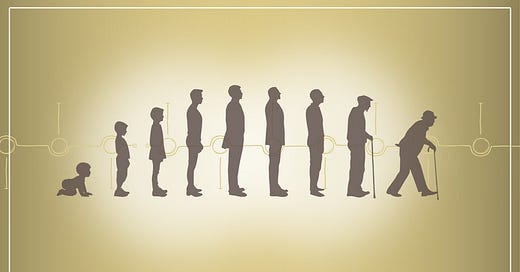If History Were the Life of Humanity
A brief meditation on the ages of the Christian man
If history were the life of humanity, and if it progressed in conformity to that nature, then we might expect it to have three or four phases like those of an individual man. Roughly: adolescence, youth, middle age, and old age.1
In this fanciful picture of things, we might suppose that humanity’s most recent birth occurred fifty days after the first Easter Sunday. Birth was given to a colt-like humanity that stood instantaneously in an adolescent posture, weak and dependent, but already energetically propelled by vital force.
This was a long adolescence that stretched over centuries like the individual years of a man, fourteen or fifteen of them. Not that there was anything adolescent about the Fathers or the Scholastics as individual persons, powerful and independent as so many of them were. But there was a general rule of violent passion that coexisted with simple filial piety and with strange notions about the normative influence of stars.
Quite suddenly, however, this humanity was overtaken by the burning disquiet of youth. It became uncomfortable in its own skin, sometimes taciturn, sometimes shouting forth its rebellion. It sowed the wind and reaped the whirlwind. But buffeted by nature’s overwhelming and opposite reaction it was forced to pause and examine the road of life ahead. And there it stands, deliberating.
Cf. Dante, Convivio.





